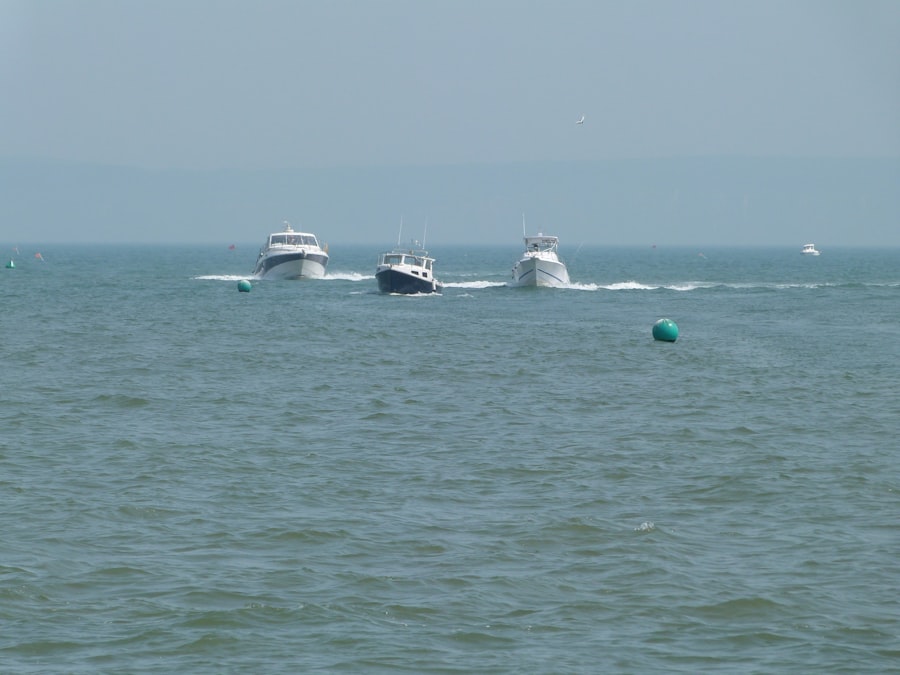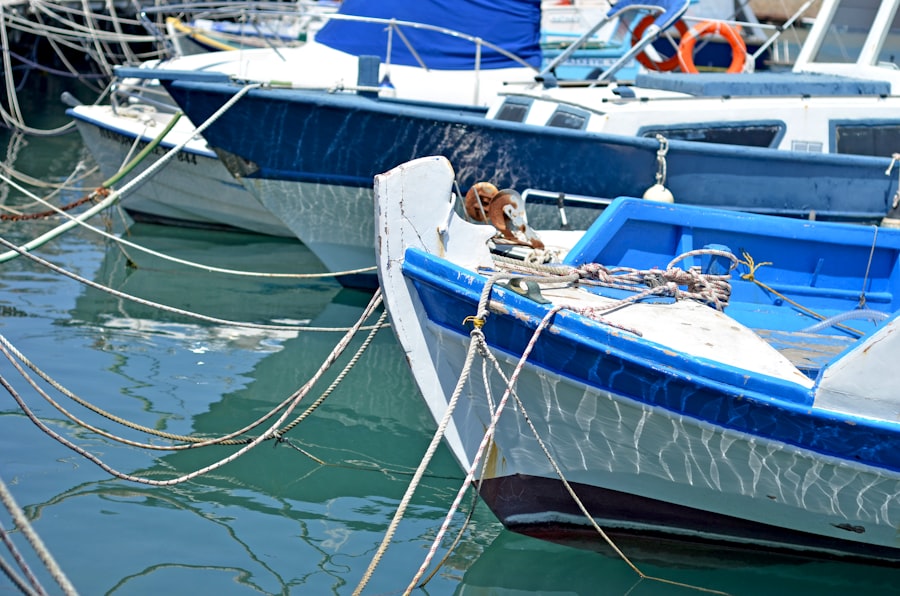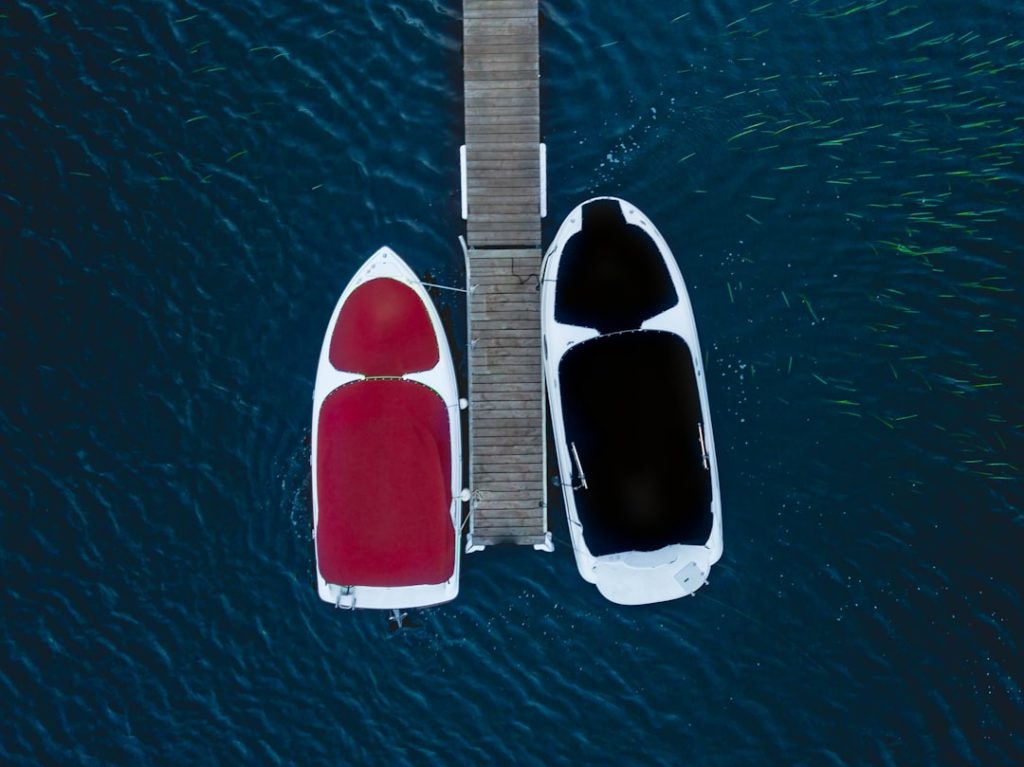Boat fenders play a crucial role in the safety and longevity of watercraft. These protective devices act as a buffer between the boat and other surfaces, such as docks, piers, or other vessels. When a boat is moored or docked, it is susceptible to movement caused by wind, waves, and currents.
Without adequate fendering, the hull can suffer from scratches, dents, or even structural damage. This not only affects the aesthetic appeal of the boat but can also lead to costly repairs and decreased resale value. Moreover, fenders contribute to the overall safety of boating activities.
They help prevent accidents by cushioning impacts that could otherwise lead to injuries for passengers or crew members. In crowded marinas or during busy docking maneuvers, having the right fenders in place can mean the difference between a smooth docking experience and a potentially dangerous situation. Thus, investing in quality boat fenders is not merely a matter of convenience; it is an essential aspect of responsible boat ownership.
Key Takeaways
- Boat fenders are essential for protecting boats from damage during docking and mooring.
- There are various types of fenders, including cylindrical, round, and flat, each suited for different boat styles.
- Selecting the correct size and number of fenders is crucial for effective protection.
- Proper installation ensures fenders stay in place and provide maximum cushioning.
- Regular maintenance and choosing quality fenders enhance durability and boat safety.
Types of Boat Fenders
Boat fenders come in various shapes, sizes, and materials, each designed to serve specific purposes. The most common types include cylindrical fenders, ball fenders, and flat fenders. Cylindrical fenders are often used for larger vessels and are designed to absorb impacts effectively due to their shape.
They can be hung vertically or horizontally and are typically made from durable materials like PVC or rubber. Their versatility makes them a popular choice among boaters. Ball fenders, on the other hand, are spherical and are often used for smaller boats or as additional protection in tight docking situations.
Their round shape allows them to roll with the motion of the boat, providing a cushioning effect that can be particularly beneficial in choppy waters. Flat fenders are designed for use against docks and are often used in conjunction with other types of fenders to provide comprehensive protection. They can be mounted on the side of a boat or placed on the dock itself to create a barrier against impacts.
Choosing the Right Size and Quantity

Selecting the appropriate size and quantity of boat fenders is critical for effective protection. The size of the fender should correspond to the size and weight of the boat. A general rule of thumb is that larger boats require larger fenders to adequately absorb impacts.
For instance, a 20-foot boat may need fenders that are 8 to 10 inches in diameter, while a 40-foot vessel might require fenders that are 10 to 14 inches in diameter. Additionally, the number of fenders needed will depend on various factors, including the type of docking situation and the expected weather conditions. When determining how many fenders to use, consider the length of the boat and the docking environment.
In calm waters, fewer fenders may suffice; however, in rougher conditions or when docking alongside other vessels, additional fenders can provide extra protection. It is also wise to have spare fenders on hand for unexpected situations. This proactive approach ensures that you are prepared for any eventuality while out on the water.
Proper Installation of Boat Fenders
| Metric | Recommended Value | Notes |
|---|---|---|
| Fender Size | 10-20% of boat length | Depends on boat size and type |
| Fender Placement Height | Midpoint of boat’s side | Align with dock or other boats’ contact points |
| Number of Fenders | 3-5 per side | More for longer boats or rough docking conditions |
| Fender Line Length | Enough to allow 6-12 inches clearance | Prevents fender from being compressed too much |
| Fender Material | Marine-grade vinyl or rubber | Durable and UV resistant |
| Fender Inflation Pressure | Manufacturer’s recommended PSI | Ensures proper cushioning effect |
| Attachment Method | Secure knots or cleats | Prevents fender from slipping or falling off |
| Inspection Frequency | Monthly or before each trip | Check for wear, damage, and proper inflation |
The installation of boat fenders is as important as their selection. Properly positioning fenders can significantly enhance their effectiveness in protecting your vessel. Fenders should be placed at points where contact with other surfaces is most likely to occur, typically along the sides of the boat at the bow and stern.
It is essential to ensure that they are secured firmly to prevent them from slipping or becoming dislodged during use. When installing fenders, consider using adjustable lines or straps that allow for easy height adjustments based on tide changes or varying water levels. This flexibility ensures that the fender remains effective regardless of environmental conditions.
Additionally, it is advisable to check the positioning of your fenders regularly, especially before docking or mooring in unfamiliar areas. A well-installed fender system can significantly reduce wear and tear on your boat’s hull.
Maintenance and Care for Boat Fenders
Maintaining boat fenders is essential for ensuring their longevity and effectiveness. Regular cleaning is necessary to remove dirt, salt, and grime that can accumulate over time. Using mild soap and water is usually sufficient; however, for tougher stains or buildup, specialized marine cleaners may be required.
After cleaning, it is crucial to rinse thoroughly with fresh water to prevent any residue from causing damage. In addition to cleaning, inspecting your fenders for signs of wear and tear is vital. Look for cracks, punctures, or any signs of degradation in the material.
If any damage is detected, it may be necessary to repair or replace the fender to maintain optimal protection for your vessel. Storing fenders properly when not in use can also extend their lifespan; keeping them out of direct sunlight and extreme temperatures helps prevent material degradation.
Benefits of Quality Boat Fenders

Investing in high-quality boat fenders offers numerous advantages that go beyond mere aesthetics. Quality fenders are typically made from durable materials that can withstand harsh marine environments, ensuring they remain effective over time. They are designed to absorb impacts more efficiently than lower-quality alternatives, providing better protection for your vessel’s hull.
Furthermore, quality fenders often come with features such as UV resistance and enhanced buoyancy, which contribute to their longevity and performance. These features ensure that they maintain their shape and functionality even after prolonged exposure to sunlight and water. Additionally, high-quality fenders tend to have better inflation systems that prevent air loss over time, ensuring they remain inflated when needed most.
Common Mistakes to Avoid
When it comes to using boat fenders effectively, several common mistakes can undermine their protective capabilities. One frequent error is underestimating the number of fenders required for a specific docking situation. Many boaters assume that one or two fenders will suffice; however, this can lead to inadequate protection and potential damage during docking maneuvers.
Another mistake is failing to adjust fender height according to changing water levels or tide conditions. If fenders are not positioned correctly, they may not provide adequate cushioning during impacts. Additionally, neglecting regular maintenance can lead to premature wear and tear on your fenders, reducing their effectiveness when you need them most.
Being aware of these pitfalls can help ensure that your boat remains protected while docked or moored.
Where to Buy Quality Boat Fenders
Finding quality boat fenders requires careful consideration of both product quality and supplier reputation. Marine supply stores often carry a wide range of options, allowing you to physically inspect products before making a purchase. These stores typically employ knowledgeable staff who can provide valuable insights into which types of fenders would best suit your specific needs.
Online retailers also offer an extensive selection of boat fenders, often at competitive prices. Websites specializing in marine equipment frequently feature customer reviews that can help guide your decision-making process. When purchasing online, ensure that you choose reputable sellers with clear return policies in case the product does not meet your expectations.
Whether shopping in-store or online, investing time in research will pay off by ensuring you acquire high-quality fenders that will protect your vessel effectively for years to come.


